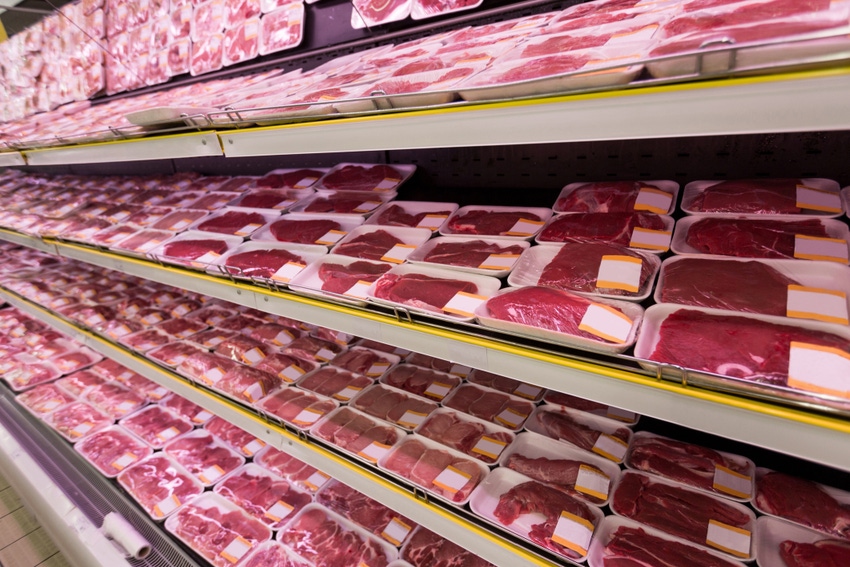All meat and poultry continues to sell far above typical levels, with turkey continuing to have highest percentage gain.

As social distancing measures sharpened further and the number of confirmed COVID-19 cases continued to rise, the final week of March showed ongoing stocking up in food and beverages, while non-food stockpiling showed signs of easing, Anne-Marie Roerink, president of 210 Analytics LLC.
While packaged and frozen food are accounting for a greater share of grocery spending since COVID-19 emerged, Roerink said the demand for meat and poultry remains highly elevated. In fact, data collected by market research firm IRI showed that meat has been the leading sales driver for the perimeter since the onset of COVID-19 in the U.S.
According to data, total perimeter sales during the week of March 29 were up 12% versus 36% for total meat and poultry (fresh and processed), despite many stores running shorter opening hours. This was on top of the 80% surge the week ending March 15 and 92% the week of March 22. Volume sales have been trailing dollar sales throughout March and were up 28%. In many cases, Roerink said retailers have continued to limit the number of items per household, particularly on popular powerhouses like ground beef and chicken breast.
“I wish I could have bought more meat but appreciate they are limiting items so everyone has a chance to buy,” a shopper noted on the Retail Feedback Group’s Constant Customer Feedback (CCF) program. “They kept restocking during the day, where other stores are close to empty for fresh produce and meat, giving everyone a chance to get some.”
All meat and poultry continued to sell far above typical levels, with turkey continuing to have the highest percentage gains. Year-to-date dollar gains for total meat are up 17% over the comparable period in 2019, according to IRI.
Roerink further noted that smaller proteins and claims-based meat likely continued to benefit from stockouts in conventional beef and chicken.
Neil Dudley, vice president with Pederson’s Natural Farms, said, “Pederson's operates in a niche of the meat industry, catering to the better-for-you, never-ever, no-sugar consumer. Orders from our retail partners have been over double our forecasted sales for March. Our in-house production team has afforded us the flexibility to pivot quickly and increase line time to meet the incredible demand. There have been no indicators of a return to pre-pandemic order routines.”
Sales growth drivers
Beef and chicken saw the largest increases in terms of dollars, and turkey was once again the highest in percentage growth during the week of March 29. In absolute dollars, beef sold an additional $158 million versus the comparable week last year, with more than 55% of it generated by ground beef. Chicken generated $61 million more during the last week of March than in the comparable week of 2019.
Roerink noted that the volume surges are affecting everyone in the meat supply chain, from producers to retailers, with many implementing measures to streamline operations, such as cutting back on the number of line extensions and specialty items, streamlining trays and packaging, etc.
“We’re experiencing a substantial increase in demand for food trays as more consumers are preparing and eating meals at home,” said Jerry Kelly with Sealed Air – Cryovac Brand Food Packaging. “The spike in sales of fresh meat at grocery stores is driving a greater need for case-ready food trays, and to meet the demand, we currently focus on the most common tray colors and sizes in order to maximize production output.”
Ground meat sales continued to be large, regardless of species, given its versatile and easy-to-prepare nature, Roerink reported. Sales of ground beef increased by 52%, ground turkey by 45%, ground chicken by 31% and ground pork by 29%.
Overall, sales have surged across all proteins and offerings, both fresh and processed. Fresh beef represented more than half of all fresh meat sales yet grew 37%.
As for what may be ahead, Roerink said 47 states had some type of executive order governing social and business activities in the first week of April, with only Missouri, South Dakota and Nebraska not having issued stay-at-home orders by then.
“Stock-up shopping is likely to taper further as pantries and freezers are full, consumers are settling into to new realities of social distancing and are confident there will be ample food,” she said.
However, Reoerink said increased everyday demand is likely to continue while social distancing measures are in effect, especially since shoppers are preparing more home-cooked meals across all meal occasions, from breakfast to dinner.
Even as demand remains robust, Roerink said economic pressure is building.
“Amid the largest weekly spikes in unemployment numbers, financially vulnerable consumers are extremely concerned about COVID-19 and its health and economic impacts. Their grocery patterns are likely to be influenced by money-saving measures, not unlike those seen during the height of the recession, such as buying private brands, smaller packages/amounts and seeking out promotions.”
All of this, she said, will likely result in a new baseline driven by higher everyday demand, but how high this demand will be above the old normal remains unknown.
About the Author(s)
You May Also Like



.png?width=300&auto=webp&quality=80&disable=upscale)

